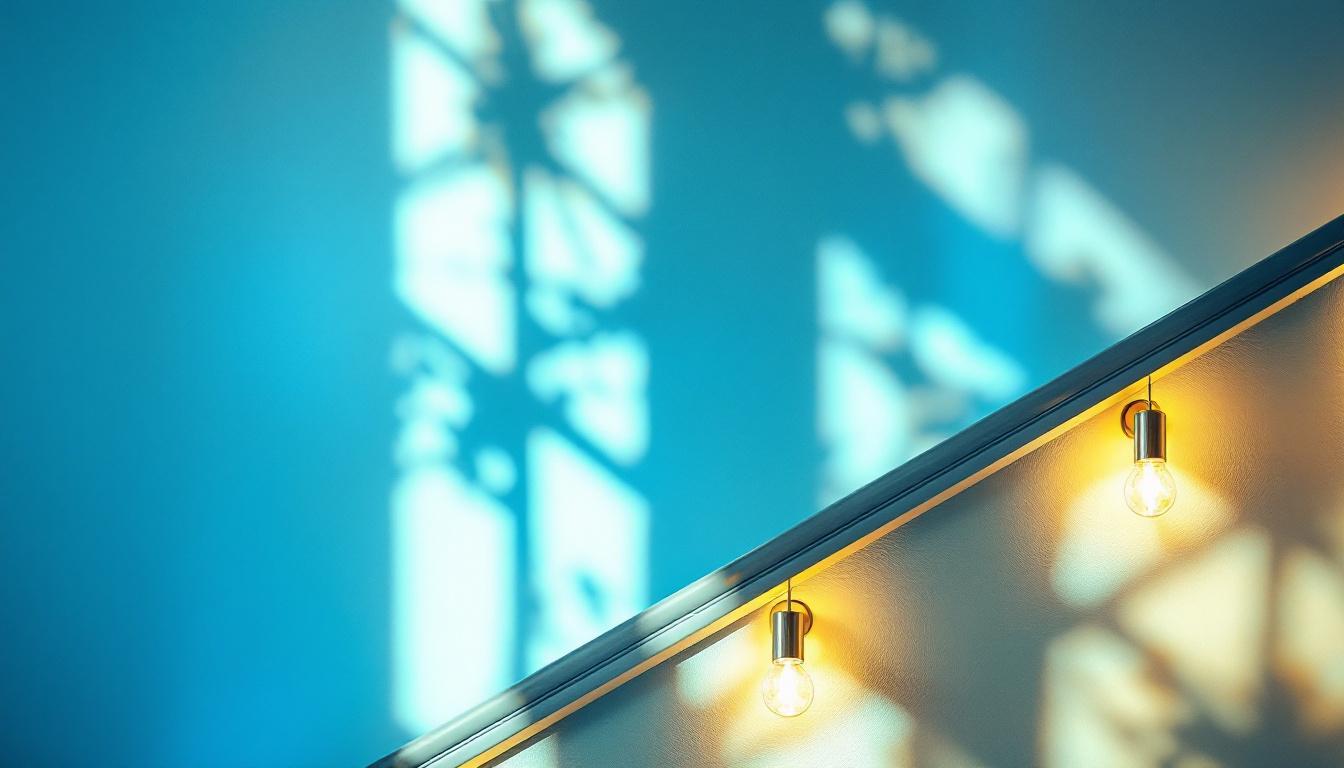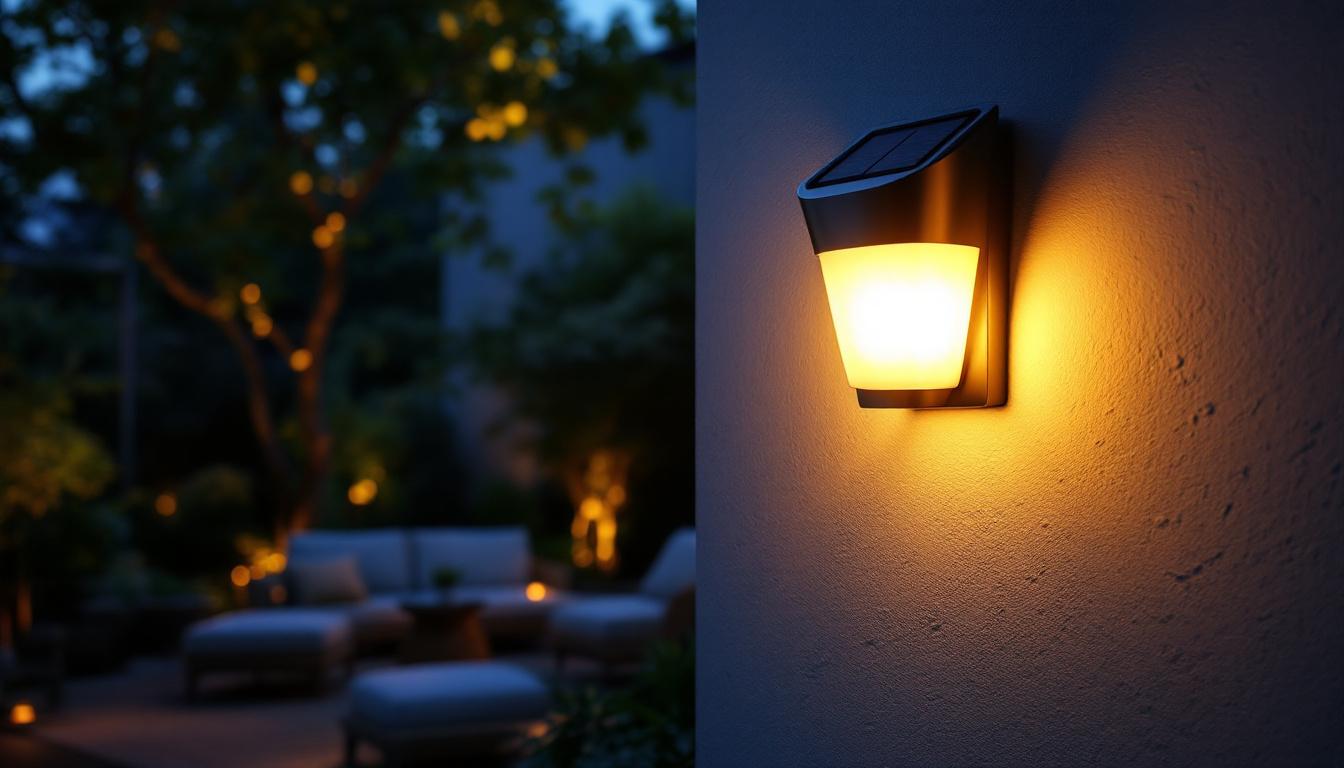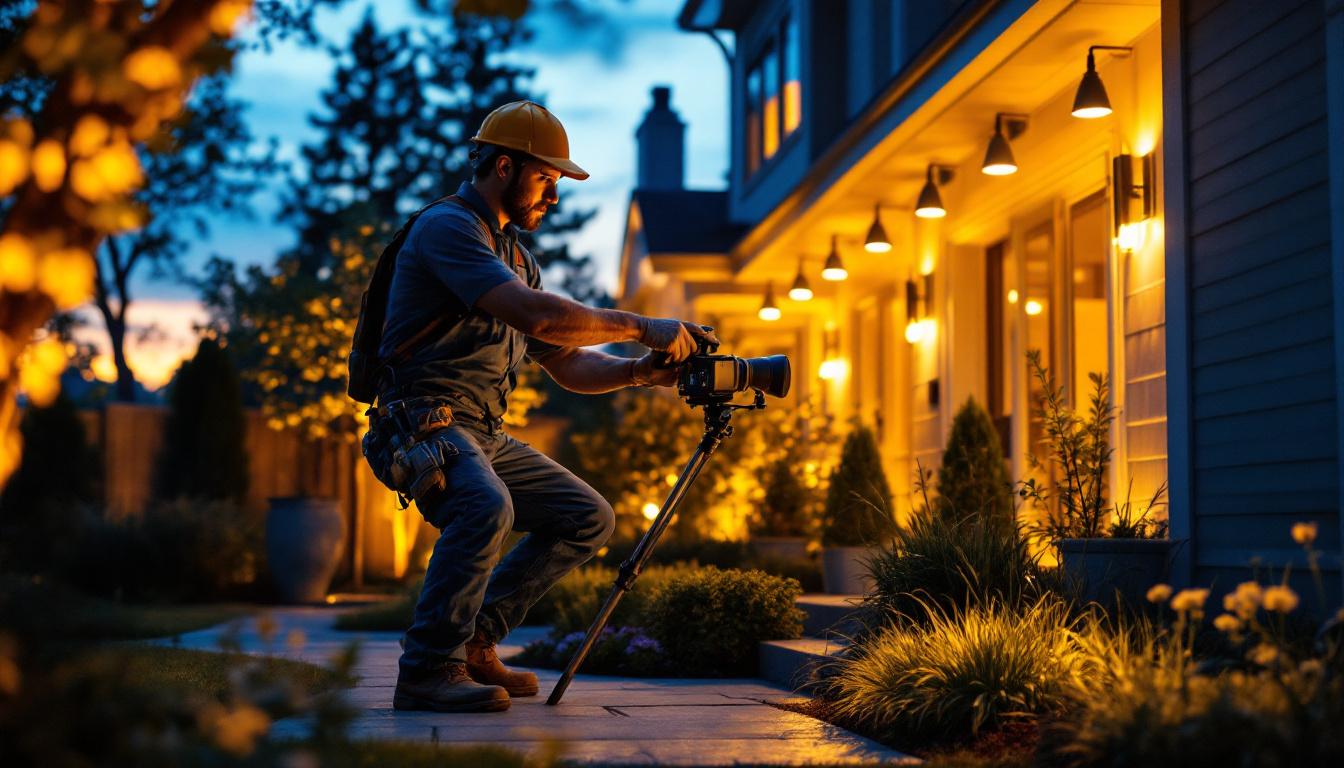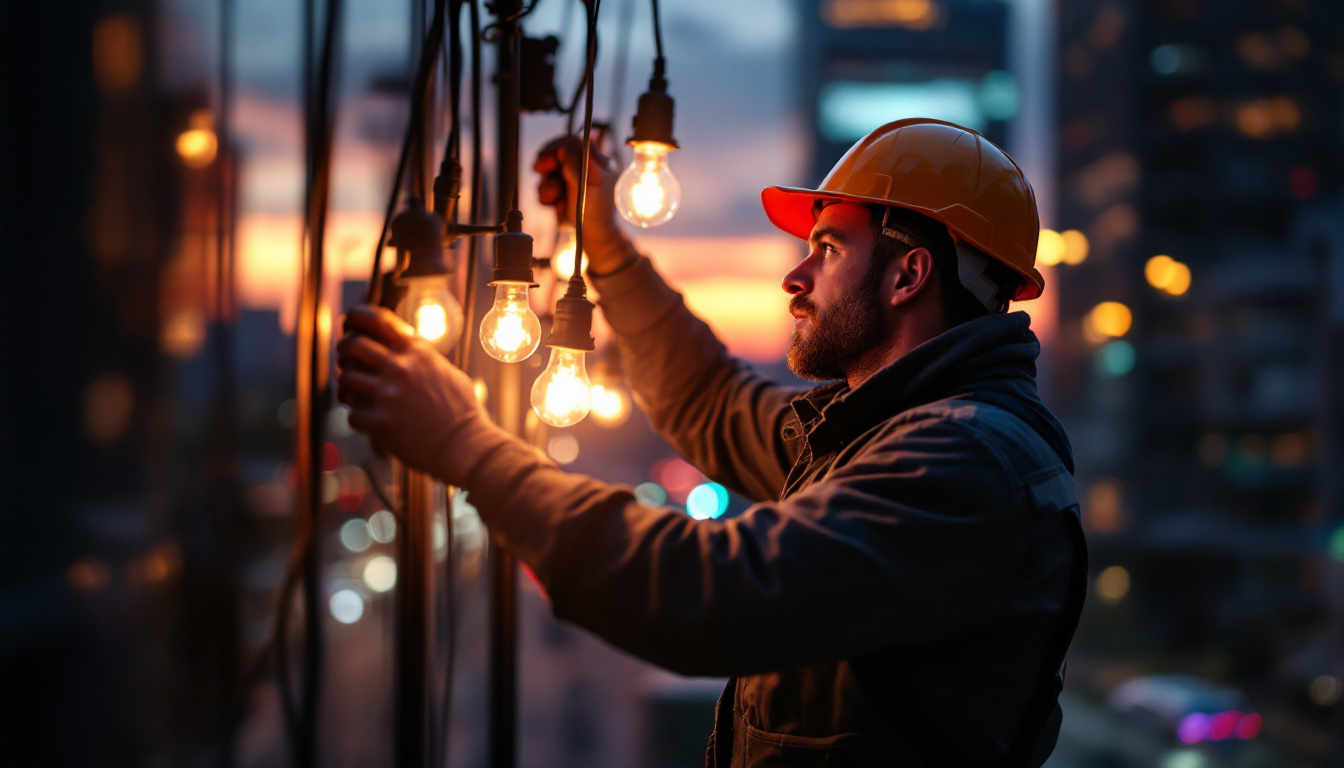
Banister lighting is more than just an aesthetic enhancement; it plays a critical role in safety, ambiance, and architectural definition. For lighting contractors, mastering the nuances of banister lighting can elevate a project from ordinary to exceptional. Properly illuminated banisters guide users safely along staircases, reduce the risk of falls, and contribute to the overall atmosphere of a space.
With the rise in modern interior design trends emphasizing subtle yet effective lighting solutions, banister lighting has become a sought-after feature in both residential and commercial projects. Contractors must be aware of the diverse needs of clients, from functional illumination to decorative accents, ensuring that the lighting complements the surrounding environment.
In addition to safety and aesthetic appeal, banister lighting can also serve as a focal point that enhances the architectural features of a staircase. For instance, LED strip lights can be discreetly installed along the edges of the banister, creating a soft glow that highlights the contours and materials of the staircase. This not only adds visual interest but also allows for creative expression, as different colors and intensities can be used to match the mood or theme of the space. Furthermore, the integration of smart lighting technology can provide users with the ability to adjust the brightness or color temperature according to their preferences, making banister lighting a versatile element in any design scheme.
Moreover, the placement of banister lighting can influence the perception of space within a home or office. Well-placed lighting can create an illusion of height or depth, making a narrow staircase appear more expansive or a grand staircase feel more inviting. Lighting contractors should consider the angle and direction of the light to minimize shadows and enhance visibility, especially in high-traffic areas. By thoughtfully incorporating banister lighting, designers can transform a simple staircase into a stunning visual pathway that not only serves a functional purpose but also elevates the entire aesthetic of the building.
Before selecting lighting fixtures or planning the installation, it is imperative to evaluate the banister’s design and material. Banisters can be made from wood, metal, glass, or a combination of materials, each requiring different mounting techniques and compatible lighting types.
For example, wooden banisters allow for concealed wiring and recessed LED strips, while metal banisters may require clamp-on fixtures or magnetic mounts. Glass banisters, often used in modern designs, call for specialized lighting that avoids glare and ensures even illumination without compromising transparency. Additionally, the finish of the material can greatly affect the lighting outcome; a glossy finish may reflect light differently than a matte surface, influencing the overall ambiance of the space.
Engaging with clients to understand their vision and functional requirements is essential. Some clients may prioritize energy efficiency and low maintenance, while others might focus on the aesthetic impact or integration with smart home systems. Documenting these preferences early helps avoid costly adjustments later. Furthermore, discussing potential future changes, such as renovations or the addition of decorative elements, can guide the selection of adaptable lighting solutions that can evolve with the space.
It’s also beneficial to explore the client’s lifestyle; for instance, families with young children may require brighter, more durable lighting options that can withstand wear and tear, while empty nesters might prefer softer, mood-enhancing lights that create a cozy atmosphere. Understanding these nuances not only helps in selecting the right fixtures but also fosters a collaborative relationship with the client, ensuring their satisfaction with the final outcome.
The size, shape, and layout of the staircase influence the type and placement of banister lighting. Narrow staircases may benefit from low-profile LED strips that do not obstruct movement, whereas wide staircases offer more flexibility for decorative fixtures. Additionally, curved or spiral staircases require custom lighting solutions to maintain consistent illumination.
Moreover, the height of the staircase can also dictate the choice of lighting. Higher ceilings may allow for pendant lights that draw the eye upward, creating a dramatic effect, while lower ceilings might necessitate flush mounts to avoid a cramped feeling. It’s also important to consider the surrounding architecture; for instance, if the staircase is part of an open-concept design, the lighting should harmonize with adjacent areas, ensuring a cohesive look throughout the home. The interplay of light and shadow can enhance architectural features and create a visually appealing flow, making the staircase not just a functional element but a focal point of the interior design.
LED strip lighting is a popular choice for banisters due to its versatility, energy efficiency, and ease of installation. These strips can be installed along the underside or side of the banister, providing continuous light that enhances safety without overwhelming brightness.
High-quality LED strips offer dimming capabilities and a range of color temperatures, allowing contractors to tailor the ambiance to the client’s preferences. Moreover, many LED strips come with waterproof ratings, making them suitable for outdoor banisters or areas prone to moisture.
Recessed lights installed directly into the banister or adjacent walls create a sleek, minimalist look. These fixtures provide focused illumination on the handrail or steps, improving visibility while maintaining a clean aesthetic.
Contractors must ensure proper spacing and alignment to avoid dark spots or uneven lighting. Additionally, recessed fixtures should be selected based on beam angle and lumen output to balance brightness with energy consumption.
For clients seeking a statement piece, accent lighting such as small pendant lights, sconces, or LED puck lights can be integrated with the banister design. These options add visual interest and can highlight architectural features or materials.
Lighting contractors should collaborate with interior designers or architects to select fixtures that complement the overall style of the space while adhering to safety standards.
Ensuring compliance with local electrical codes and standards is non-negotiable. Lighting contractors must verify that all wiring is installed safely, using appropriate gauge cables, connectors, and protective conduits. This is especially important for banisters exposed to outdoor elements or high-traffic areas.
Ground fault circuit interrupters (GFCIs) should be incorporated where necessary to prevent electrical hazards. Additionally, all connections must be secure and tested thoroughly before finalizing the installation.
Identifying the optimal power source is crucial. Contractors should consider whether the lighting will be powered by the main electrical system, low-voltage transformers, or battery-operated solutions. Each option has implications for installation complexity, maintenance, and longevity.
Integrating control systems such as dimmers, motion sensors, or smart home compatibility enhances user experience and energy efficiency. Motion-activated banister lights, for example, improve safety by illuminating only when movement is detected, reducing unnecessary power consumption.
Although LED lighting generates minimal heat compared to traditional bulbs, proper heat dissipation is still necessary to prolong fixture lifespan and maintain safety. Contractors should ensure that fixtures are installed with adequate ventilation and that heat sinks or thermal management components are in place.
Selecting fixtures and materials that withstand wear and environmental factors reduces long-term maintenance costs. For outdoor or high-moisture areas, weatherproof and corrosion-resistant components are essential.
Contractors should also provide clients with maintenance guidelines, including cleaning procedures and recommended inspection intervals, to preserve the lighting’s functionality and appearance.
Accurate measurements ensure that lighting fixtures fit perfectly and provide uniform illumination. Contractors should use laser measuring tools and create detailed layout plans before beginning installation.
Marking fixture locations on the banister and verifying alignment with the staircase steps help avoid installation errors that could compromise safety or aesthetics.
One hallmark of professional banister lighting is the invisibility of wiring. Utilizing channels within the banister, raceways, or adhesive cable management systems can hide wires effectively.
When wiring cannot be concealed within the banister, contractors should route cables along edges or behind trim to minimize visual impact.
After installation, thorough testing is essential to confirm that all lights operate correctly and safely. Contractors should check for flickering, dimming functionality, sensor responsiveness, and evenness of light distribution.
Documenting the installation with photos and providing clients with a demonstration of controls and maintenance tips enhances professionalism and customer satisfaction.
With the growing popularity of smart homes, integrating banister lighting with voice control and mobile apps is becoming standard practice. Contractors should familiarize themselves with leading smart lighting platforms to offer clients customizable and remotely controllable solutions.
Human-centric lighting, which adjusts color temperature and intensity based on time of day, is gaining traction in residential and commercial settings. Banister lighting that adapts to circadian rhythms can improve occupant comfort and well-being.
Eco-conscious clients increasingly demand sustainable lighting options. Using energy-efficient LEDs, recyclable materials, and solar-powered fixtures for outdoor banisters aligns with these expectations and reduces environmental impact.
For lighting contractors, mastering the art and science of banister lighting requires a comprehensive approach—from initial assessment through installation and maintenance planning. By understanding client needs, selecting appropriate fixtures, adhering to safety standards, and embracing emerging technologies, contractors can deliver lighting solutions that enhance safety, beauty, and functionality.
Staircases are often focal points in architecture, and well-executed banister lighting can transform these spaces into inviting and secure environments. A detailed checklist and adherence to best practices ensure that every project meets or exceeds expectations, reinforcing the contractor’s reputation for quality and professionalism.
Ready to elevate your banister lighting projects with the finest selection of spec-grade lighting products? Look no further than LumenWholesale, where we provide contractors with exceptional lighting solutions at wholesale prices that simply can’t be beaten. Our commitment to quality and affordability ensures that you can light up any staircase with confidence and creativity. Plus, with the convenience of free shipping on bulk orders, you can trust that you’re getting the best value without any hidden costs. Don’t compromise on quality or price—choose LumenWholesale for your lighting needs and make your next project shine. Discover the difference and Wholesale Lighting at the Best Value today!

Discover the latest innovations in special light bulbs with our comprehensive guide tailored for lighting contractors.

Discover how wall mounted outdoor solar lights enhance security, save up to 70% energy, and add style.

Discover why lighting contractors should prioritize outdoor lighting projects in this insightful article.

Discover the insider secrets of lighting contractors as they unveil the top vapor light manufacturers revolutionizing the industry.